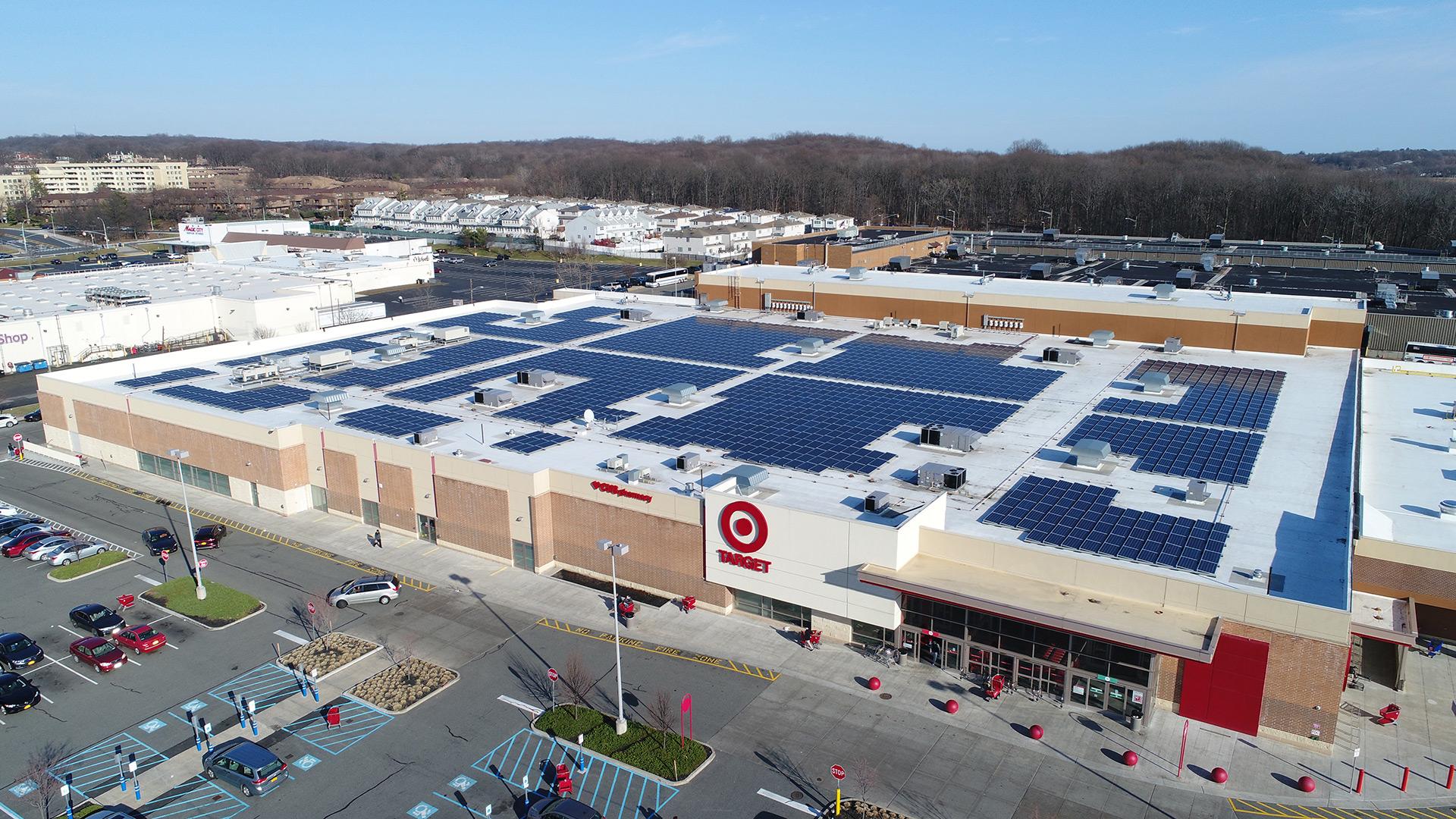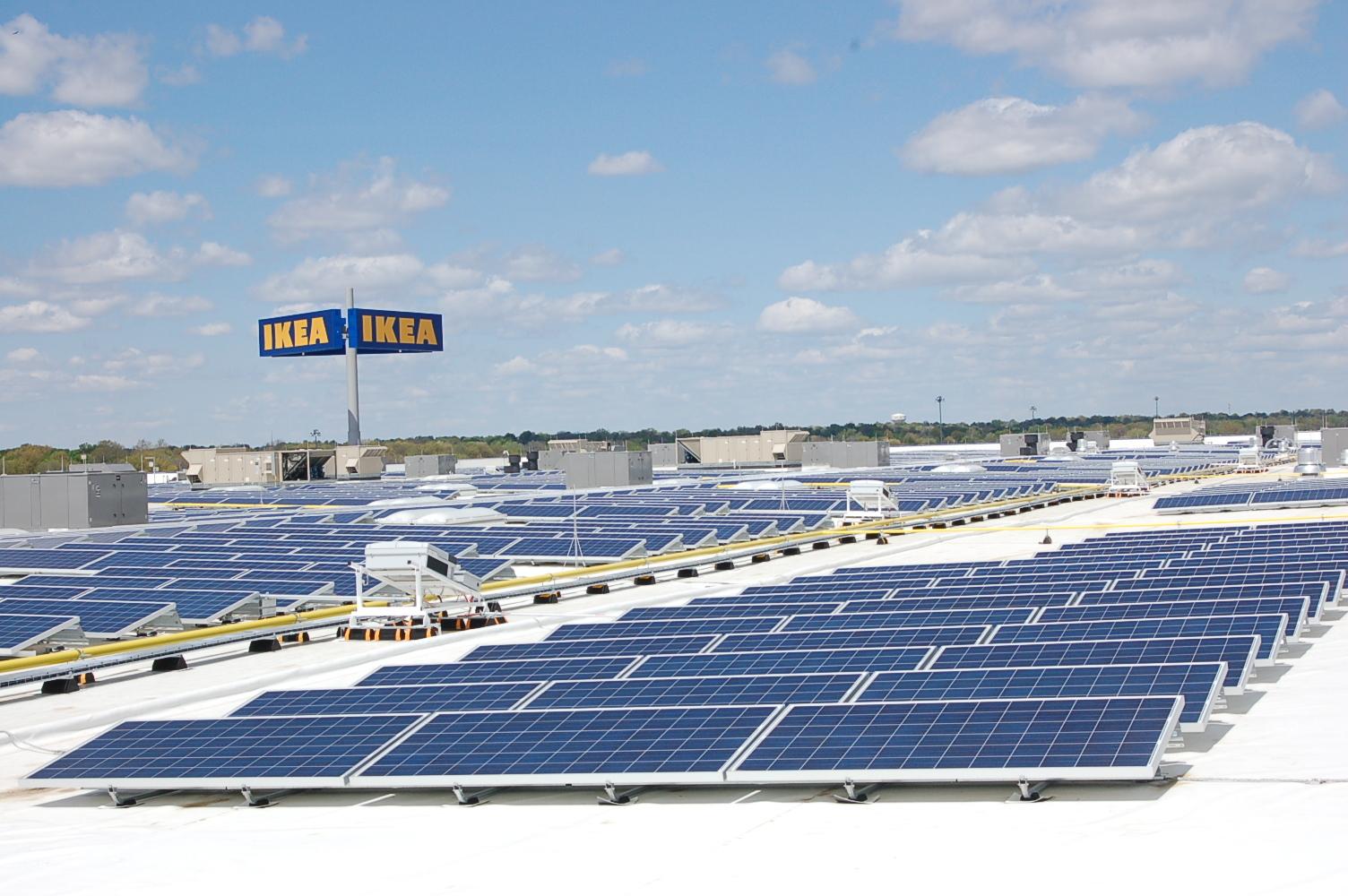The Biden Administration has been clear about its ambitious plans to accelerate the pace of renewable energy deployment in the United States. Plans by the Administration call for solar energy to supply 45% of the nation’s electricity by 2050, a significant increase from the 3% that solar energy accounted for in 2020. The U.S. will need to pull out all the stops and embrace unconventional means of solar deployment in order to make Biden’s goal a reality. A possible solution that seems both out of left field and existing right underneath our collective noses is emerging on the vast rooftops of America’s big box retailers.
Big Rooftops = Big Solar Potential
A report recently released by the non-profit Environment America underscores just how immense the solar generation potential is for America’s big box retailers.
Regardless of where you live in the U.S., big box stores likely feel like a ubiquitous fixture of your landscape. According to Environment America’s report, the nation’s big box retail stores, supercenters, large grocery stores, and malls collectively boast 7.2 billion square feet of cumulative rooftop space. In solar capacity terms, these rooftops have the potential of generating a jaw-dropping 84.4 terawatt-hours (TWh) of solar electricity each year. This is roughly equivalent to the amount of electricity used to power 8 million average U.S. homes. This immense solar potential touches almost every state in the country.
Incorporating solar panels on every square foot of cumulative big box retailer rooftop space would reduce greenhouse gas emissions by 52 million metric tons of carbon dioxide a year, or put another way, it would be like taking more than 11.3 million cars off the road.
A Winning Business Case
The falling cost of solar energy systems and the unpredictable and steadily increasing cost of electricity from the grid makes the financial case for solar adoption on commercial rooftops a no brainer. The Environment America report notes that America’s big box retailers spend just under $18 billion per year on electricity, and by equipping their stores with rooftop solar panels, retailers could cut their annual electricity costs in half. In addition to this direct cost savings, a host of additional financial benefits could be captured by retailers who embrace rooftop solar. For example:
- Solar panels equipped with energy storage could reduce demand charges for large commercial users. Demand charges often represent 30-70% of a commercial customers’ bill.
- Solar panels affixed to a large retailer’s roof can indirectly reduce cooling and heating costs for the company by shading roofs during the day and providing insulation at night.
- Corporate brands that go “all-in” on highly visible renewable energy commitments can benefit from increased customer loyalty. A Deloitte report from last year found that nearly a quarter of surveyed consumers said they would switch to buying a company’s products specifically because of shared values on the environment. This dynamic is especially pronounced in the Gen Z cohort – who has burgeoning purchase power – as this group is three times more likely to switch brands based on shared values than those 65 years old and above.
Who’s Leading the Way?
It is no secret that many of the world’s most prominent businesses have embraced renewable energy in a big way in recent years, as pressure has mounted from consumers and shareholders alike. Tech giants like Apple, Facebook, Microsoft, and Google have traditionally been among the world’s top purchasers of off-site renewable energy as these companies seek to green up their image given the power-sucking aspect of their line of business.
Even though as a collective big box retailers are just scratching the surface on installed on-site solar capacity, the Environment America report points out those companies that are leading the way – namely Target, Wal-Mart, and IKEA.
At the end of 2019, Target had 259 MW of solar generation capacity installed on its stores and distribution centers across the country, while Wal-Mart had 194 MW through the end of FY2021. Target’s solar installations provide between 15% and 40% of its location’s electricity needs, while Wal-Mart on-site installations provide between 20% and 30%. Meanwhile, IKEA has solar installations on 90% of its U.S. locations, and sources more than half of its global direct energy needs by renewable sources.
The on-site investments by Target, Wal-Mart, IKEA, and other competitors are laudatory and yet also just scratching the surface of what is possible, as noted in the Environment America report. All three companies have near-term net-zero emissions goals, so hopefully renewable energy investments will continue to swell by these industry leaders. Target’s goal is to hit net-zero emissions by 2040, Walmart plans to have zero emissions with no carbon offsets also by 2040, and IKEA is striving for net-zero or net-negative emissions by 2030.
Putting rooftop solar on the facilities of companies with large footprints is both a logical and untapped opportunity to greatly advance global and national climate goals. Creative solutions will need to be pursued and solar panels will have to find their way to some unconventional spots in the process. The public and private sector should collectively view this as an opportunity to collaborate and advance mutually beneficial clean energy goals. Put simply, we will need more instances of solar panels being put on airfields, big box retailer rooftops, and other unique places like along highway noise barriers.
We, the consumer, should remember that we have a lot of pull when it comes to nudging the private sector towards committing to and following through on ambitious clean energy targets that help to make the world more sustainable for future generations.
Cover Photo Source: Wal-Mart








